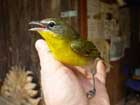Frequently Asked Questions
Some basic questions about Wildlife Management are answered in these FAQ. If you can't find what you need here, please contact us and we'll try to help.
What is Wildlife Management in Texas?
In 1995 Texas voters approved an amendment to the Texas Constitution that allows land that is currently valued as agricultural to switch to Wildlife Management without tax penalty. Traditional agricultural use includes ranching, farming and timber production.
Why should I do Wildlife Management?
Texas agricultural land use rules in the past have actually encouraged overgrazing simply to maintain agricultural land values. With the introduction in 1996 of Wildlife Management as an agricultural land use, landowners can switch back and forth between traditional agricultural use to wildlife use with no tax penalty. This allows, for example, a rancher to defer grazing and allow time for grasses to grow while managing for deer hunting or songbirds or whatever wildlife activities interest the landowner.
How do I write a Wildlife Management plan?
Each landowner writes their own plan for one of the eight Texas ecological regions based on their interests and what is appropriate. The plan may be handwritten, typewritten or based on the Wildlife Management Plan Form provided by Texas Parks and Wildlife (TPWD). TPWD biologists are available to assist landowners in developing a plan according to TPWD guidelines.
What are the eight ecological regions of Texas?
- Cross Timbers
- High Plains/Panhandle
- Hill Country
- Oak Prairie
- Pineywoods
- Post Oak Savannah
- South Texas Plains
- Trans Pecos
Detailed maps and other information provided by TPWD will help you identify your ecological region and Wildlife Management options.
What do I have to do for wildlife management?
The new law allows landowners to manage land for wildlife by actively implementing at least 3 of the following seven wildlife management activities:
- Habitat Control (habitat management)
- Erosion Control
- Predator Control
- Providing supplemental supplies of water
- Providing supplemental supplies of food
- Providing shelters
- Making census counts to determine population
Follow the TPWD Guidelines for Qualifications of Agricultural Land in Wildlife Management Use for suggestions on how to create and implement your plan.
What kind of paperwork is involved?
Once the plan is written, simply document activities performed throughout the year. Local County Tax Appraisal Districts require landowners to submit an Annual Report including activities, photos, maps, census counts or any other documentation that shows work done towards your individual plan.
You can use the Wildlife Management Plan Reporting Form to guide you in preparing an Annual Report or you can create your own method of documenting activities performed. For example, The Journal on this site is a supplemental part of Waterstone's annual wildlife report which is also subbitted in written form, combined with maps and significant photographs.How often are plans written and approved?
The original plan is good as long as it supports the overall goals for wildlife on the land. The plan is an 'active' document that may be updated every 5 to 10 years or as needed to accommodate major changes to the landowners goals, new conditions, observations or any other factors. The Annual Report is due yearly to your local County Tax Appraisal District.
What wildlife activities are done at watersto_jennystone?
Waterstone is in the Hill Country eco-region of Texas. The Journal on this site details activities for wildlife agricultural use that are performed there.
I don't have acres of land. What can I do in my own backyard?
You can encourage backyard wildlife by following the same Wildlife Management activities that landowners do, just on a smaller scale. The National Wildlife Federation and Lady Bird Johnson Wildflower Center are great resources for ideas on how to create backyard habitats.
Can I visit a Wildlife Management Area?
Although Waterstone is not open to the public, Wildlife Management Areas maintained by the state of Texas are available to the public. Many provide technical assistance to answer questions about managing wildlife in specific ecological regions.
Before visiting a Wildlife Management Area, be sure to call ahead for current conditions and access information. Wildlife Management Areas are working laboratories for learning about wildlife and habitat. These activities may influence what you will be allowed to see and do while visiting.



